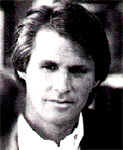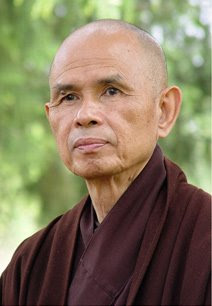Buddha_Buddhism
Who was Buddha and what is Buddhism?
Who practices Buddhism and what are its core values?
How can Buddhism help me in my daily life?
Seekers can find answers to these questions and much more in the books on this list, compiled by Special Services Librarian Elizabeth Lang.
Advice on Dying and Living a Better Life by The Dalai Lama.
 The Dalai Lama draws upon a seventeenth-century poem, credited to the First Panchen Lama, to explore the eight stages of death. For each stage he discusses how to enrich life on earth, prepare for death, and die without fear. Translated and edited by Buddhist scholar Jeffrey Hopkins. RC 56568.
The Dalai Lama draws upon a seventeenth-century poem, credited to the First Panchen Lama, to explore the eight stages of death. For each stage he discusses how to enrich life on earth, prepare for death, and die without fear. Translated and edited by Buddhist scholar Jeffrey Hopkins. RC 56568.
The Art of Happiness at Work by The Dalai Lama and Howard C. Cutler.
In this sequel to The Art of Happiness (RC 47827, BR 13301), a psychiatrist questions the Dalai Lama about applying Buddhist principles in the workplace. The Tibetan spiritual leader advises that career satisfaction is related to staying motivated, having a realistic "sense of self," and maintaining "basic human values" such as kindness and compassion. Art of Happiness series. RC 57386, BR 15725.
Buddha in Your Backpack: Everyday Buddhism for Teens by Franz Metcalf.
 Provides information on Buddha and his teachings, applying Buddhist philosophy to issues facing teenagers, such as family relations, school, body changes, sexual attraction, friendship, and personal ethics--without preaching religious conversion. Includes introductions to meditation and further study. Some descriptions of sex. For junior and senior high readers. RC 56665.
Provides information on Buddha and his teachings, applying Buddhist philosophy to issues facing teenagers, such as family relations, school, body changes, sexual attraction, friendship, and personal ethics--without preaching religious conversion. Includes introductions to meditation and further study. Some descriptions of sex. For junior and senior high readers. RC 56665.
The Buddha in Your Mirror: Practical Buddhism and the Search  for Self by Woody Hochswender, Greg Martin, Ted Morino.
for Self by Woody Hochswender, Greg Martin, Ted Morino.
Introduction to this eastern Asian religion by followers of Nichiren Buddhism. Contends that everyone can become a Buddha, or enlightened one, by understanding life’s profound truths. Explains basic Buddhist principles and describes ways, including chanting, to access one’s "Buddha nature" and apply it to overcome obstacles and  attain happiness. RC 61168.
attain happiness. RC 61168.
Buddha, the Quest for Serenity: A Biography by George N. Marshall.
A popular biography of Siddhartha Gautama, the oriental prince who became the Buddha and who more than any other man influenced the religion and philosophy of the far East. Also serves as a layman’s introduction to Buddhism and contains a glossary of Buddhist theological terms. RC 14221.
 Buddhism: A Concise Introduction by Huston Smith and Philip Novak.
Buddhism: A Concise Introduction by Huston Smith and Philip Novak.
Describes the history, fundamental teachings, and practices of this Eastern religion. The first half of the book explores the life of the Buddha (born circa  563 B.C.E.), explains the core tenets, and distinguishes between various sects. The final chapters discuss the Western expansion and adaptations of Buddhism, particularly in America. RC 56816.
563 B.C.E.), explains the core tenets, and distinguishes between various sects. The final chapters discuss the Western expansion and adaptations of Buddhism, particularly in America. RC 56816.
Buddhism: A Very Short Introduction by Damien Keown.
 Concise guide to Buddhism as a religion and a way of life. Examines the life and teachings of Buddha, the development of Buddhist thought and practice, and the relevance of the faith to contemporary issues. Explores key topics of karma, rebirth, meditation, ethics, Buddhism in the West, and more. RC 59971.
Concise guide to Buddhism as a religion and a way of life. Examines the life and teachings of Buddha, the development of Buddhist thought and practice, and the relevance of the faith to contemporary issues. Explores key topics of karma, rebirth, meditation, ethics, Buddhism in the West, and more. RC 59971.
An End to Suffering: The Buddha in the World by Pankaj Mishra.
 Indian author of the novel The Romantics (RC 52514) presents his autobiographical journey on the subcontinent exploring Buddhist philosophy. Describes his search to understand Buddha’s relevance in the modern world by discussing the personal and social issues that Buddha addressed and their impact on twentieth-century politicians. RC 61617.
Indian author of the novel The Romantics (RC 52514) presents his autobiographical journey on the subcontinent exploring Buddhist philosophy. Describes his search to understand Buddha’s relevance in the modern world by discussing the personal and social issues that Buddha addressed and their impact on twentieth-century politicians. RC 61617.
Ethics for the New Millennium by The Dalai Lama.
Appeals to all human beings to practice a "positive ethical conduct" towards others based on universal principles. Expounds on the necessity for love and compassion as guiding forces in behavior that will lead to happier, fulfilled lives. RC 48810.
Insight Meditation: The Practice of Freedom by Joseph Goldstein.
 In Buddhist teaching, wisdom is knowing that whatever arises has the nature to cease. This knowledge stops clinging which in turn stops suffering. Meditation retreat leader Goldstein asserts that practicing meditation and selfless nonharming behavior leads to enlightenment or freedom from suffering. He then discusses how to meditate with this goal in mind and points out the traps to avoid along the way. RC 37540.
In Buddhist teaching, wisdom is knowing that whatever arises has the nature to cease. This knowledge stops clinging which in turn stops suffering. Meditation retreat leader Goldstein asserts that practicing meditation and selfless nonharming behavior leads to enlightenment or freedom from suffering. He then discusses how to meditate with this goal in mind and points out the traps to avoid along the way. RC 37540.
An Introduction to Buddhism: Teachings, History, and Practices by Peter Harvey.
 Harvey’s account of the 2,500-year history of Buddhism describes its development from origins in India, its expansion throughout Asia, and its introduction into Europe and America. He discusses the practices of ethics, devotion, monasticism, and meditation, pointing out the diversity within Buddhist traditions as well as the beliefs and rites common throughout the Buddhist world. RC 34538.
Harvey’s account of the 2,500-year history of Buddhism describes its development from origins in India, its expansion throughout Asia, and its introduction into Europe and America. He discusses the practices of ethics, devotion, monasticism, and meditation, pointing out the diversity within Buddhist traditions as well as the beliefs and rites common throughout the Buddhist world. RC 34538.
The Miracle of Mindfulness: A Manual on Meditation by Thich Nhat Hanh.
 Although this guide to engaged Buddhism was written by a Vietnamese monk for his students, it recommends exercises that can be performed anywhere. The practice of mindfulness can transform an everyday activity such as washing dishes, taking a bath, lying in bed, or breathing into a meditation. Translated by Mobi Ho. RC 44957.
Although this guide to engaged Buddhism was written by a Vietnamese monk for his students, it recommends exercises that can be performed anywhere. The practice of mindfulness can transform an everyday activity such as washing dishes, taking a bath, lying in bed, or breathing into a meditation. Translated by Mobi Ho. RC 44957.
The Teachings of the Compassionate Buddha edited by Edwin A. Burtt.
The Oriental religion of Buddhism, founded twenty-five centuries ago by Siddhartha Gautama of India, is now practiced by millions. This book includes the early scriptures of Buddhism, as well as Buddhist thought in later centuries. BR 7899, RC 58027.
The Tibetan Book of Living and Dying by Sogyal Rinpoche.
 Buddhist spiritual leader Rinpoche maintains that most westerners need a fundamental change in attitude towards death and dying--they need to understand the truth of impermanence. He discusses practicing to prepare for death and helping others with death. He stresses his belief in the importance of the dying person’s last thoughts being filled with positive emotions and sacred feeling while the person lets go of grasping, yearning, and attachment. Edited by Patrick Gaffney and Andrew Harvey. RC 36890, BR 9358.
Buddhist spiritual leader Rinpoche maintains that most westerners need a fundamental change in attitude towards death and dying--they need to understand the truth of impermanence. He discusses practicing to prepare for death and helping others with death. He stresses his belief in the importance of the dying person’s last thoughts being filled with positive emotions and sacred feeling while the person lets go of grasping, yearning, and attachment. Edited by Patrick Gaffney and Andrew Harvey. RC 36890, BR 9358.
When Things Fall Apart: Heart Advice for Difficult Times by Pema Chödrön.
 American Buddhist nun describes how to apply her religion’s philosophy to achieve happiness. Explains how to communicate, experience difficult emotions, and become compassionate using eight worldly dharma or basic Buddhist beliefs. RC 53374.
American Buddhist nun describes how to apply her religion’s philosophy to achieve happiness. Explains how to communicate, experience difficult emotions, and become compassionate using eight worldly dharma or basic Buddhist beliefs. RC 53374.






















